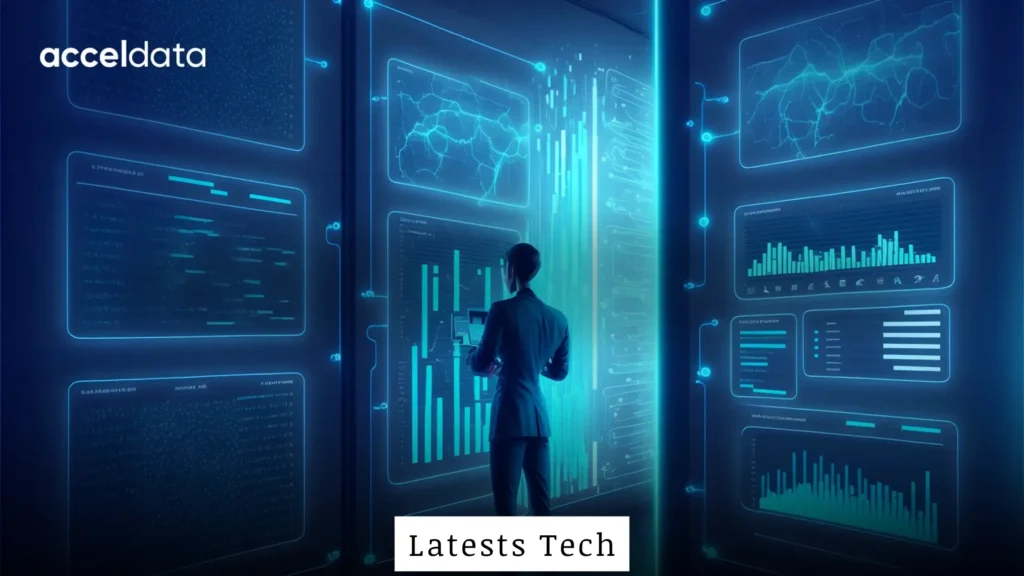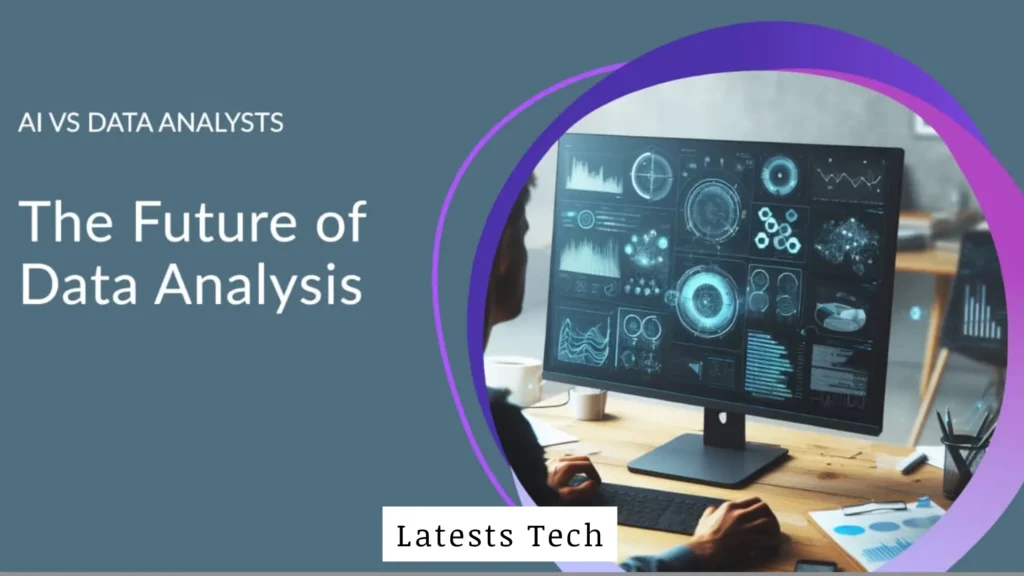Discover the impact of leading analysts in data and AI on industries worldwide.Discover the ways in which your knowledge helps foster new solutions, anticipate market shifts, and support all strategic business decisions.
Introduction
Instead, in the modern world of big data, organizations make use of the most contemporary scaffolding of knowledge. In the age of the next generation of artificial intelligence and big data, the profession of such specialists has never been more valuable. This is where leading analysts in data and AI step in, combining expertise with innovative tools to uncover patterns, predict trends, and drive informed decisions.It is against this background that this article aims at discussing the importance of these industries and the way these analysts are contributing to industries at the international level.
Who Are Leading Analysts in Data and AI?
Industry insiders and other workers in the data and AI sector are individuals who work on big data and make use of AI tools to offer recommendations. It resides in the application of statistical techniques as well as machine learning algorithms together with the best understanding of the industry to make warnings, forecasts, and right suggestions. They work in roles such as:
- Data Scientists
- AI Engineers
- Business Analysts specializing in AI
- Predictive Analytics Experts
These analysts are the workhorses of today’s evidence based organizations in the business world.
Why Are Leading Analysts in Data and AI Crucial for Businesses?
Bearing in mind the role of data and AI, businesses depend on leading analysts for a number of reasons.
- Enhanced Decision-Making: The analysts are useful to the organizations by providing them with past data along with the real-time data.
- Predictive Insights: They apply analytical skills to predictability in order to help businesses to be in a position to predict the future with ease.
- Optimization: Experts work to enhance operations by evaluating the gaps that need AI enhancements.
- Personalization: Mature use of artificial intelligence in creating insights allows firms to design unique customer experiences.
Learn how AI is transforming business strategies.

Skills and Tools Used by Leading Analysts in Data and AI
To be effective therefore, leading analysts need to possess both analytic and technical skills.
Key Skills
- Proficiency in programming languages like Python and R
- Expertise in machine learning algorithms
- Familiarity with software and technology used in creating data presentations such as Tableau, and Power BI.
- The ability to analyze data presented and possess problem solving skills.
Essential Tools
- TensorFlow and PyTorch: For building and deploying AI models
- Apache Hadoop and Spark: For handling big data
- AWS and Google Cloud AI: For cloud-based analytics and AI solutions
The Role of Leading Analysts in Key Industries
Healthcare
Experts in field data and AI are transforming healthcare as they provide doctors with patient data on the likelihood of the disease, potential treatments, and how healthcare resources can best be utilized. Other organizations such as IBM Watson Health have already applied artificial intelligence in diagnosis for better results.
Finance
The finance industries incorporate AI to detect fraud, to assess risk, and ICT enabled algorithmic trading. For example, the use of AI platforms such as the Bloomberg Terminal is revolutionising financial analysis.
Retail and E-commerce
Other important jobs include artificial intelligence analysts who are used to tailor the shopping experience, arrange inventory and enhance customer relations among others. Amazon is a good example of how AI analysts are used in providing the right recommendations and the right stock.
Manufacturing
AI analysts have a tremendous impact in manufacturing through three primary uses: Monitoring and prediction of machinery failures, ensuring high quality standards, and stocking management respectively.
Traditional Analysts and AI-Driven Analysts
| Aspect | Traditional Analysts | AI-Driven Analysts |
| Focus Area | Historical data analysis | Predictive and real-time insights |
| Tools Used | Excel, SQL | Machine learning, AI frameworks |
| Decision-Making | Manual and intuition-based | Data-driven and automated |
| Scalability | Limited to small datasets | Handles big data effortlessly |
Explore how AI tools differ from traditional analytics.
The Impact of AI-Driven Analysts on Innovation
Top minds of data and AI are not only addressing existing issues but addressing the future as well.
- AI-Powered Customer Insights: Analysts apply AI in aspects of the consumer to help accurately predict the behavior of consumers in order to help market to them effectively thus applying hyper-targeted marketing.
- Automation: Automations is a decrease in the amount of manual labor inputted which results in an increase in efficiency and productivity.
- Breakthrough Research: From genomics to space sciences, industries using AI find new frontiers in information analysis.
Top Companies Employing Leading Analysts in Data and AI
Most of the strategic first-line corporate firms depend on leading analysts to manage its artificial intelligence policies. Some notable examples include:
- Google: Leveraging AI for search algorithms and cloud services.
- Microsoft: Utilizing AI to enhance its Azure platform and Office suite.
- Tesla: Relying on AI analysts for autonomous vehicle development.
- Alibaba: Enhancing its e-business strategy and distribution with the help of AI..
Challenges Faced by Leading Analysts in Data and AI
Despite their expertise, leading analysts face several challenges:
- Data Quality: This implies that when the data collected is inaccurate or incomplete then the result of the analysis will also be inaccurate.
- Bias in AI Models: It remains a problem to use AI fairly and not cause some kind of bias in the predictive model.
- Privacy Concerns: Analysts must navigate strict data privacy regulations to protect sensitive information.
- Keeping Up with Technology: The rapid pace of AI advancements requires constant upskilling.
Learn about the latest challenges in AI.
How to Become a Leading Analyst in Data and AI
So for any aspiring analyst, let’s look at how we could get there.
- Educational Background: The important prerequisite to become a data scientist is to have a computer science, mathematics or data science degree.
- Certifications: Such ones as Google AI Certification and AWS Machine Learning Certification add to credibility.
- Practical Experience: Real world data and AI tools must be used : It is important to meet data students really and make them handle actual data using some of the tools listed below.
- Networking: Know what industry specialists have to offer; attend gatherings of Artificial Intelligence enthusiasts and society members.
Future Trends for Leading Analysts in Data and AI
AI Ethics
Ethical responsibilities for proper use of AI technologies will become a part of the analyst’s job.
Real-Time Analytics
As IoT and 5G become the new norm, real-time data processing will become requirements for analysts instead of the exception.
Cross-Disciplinary Integration
Machine intelligence advice experts from other domains like biology and social sciences to work together in order to solve some broader problems.
Generative AI
Such devices are still helpful in enabling analysts to work with GPT and improve their turnaround time as well as accuracy.
Discover the future of AI analytics.

Conclusion
Due to the constantly increasing usage of data and AI, this field is progressing fast, and the leading analysts in the data and AI field are taking an active part in this process. These implies a set of specialists that are focused on freeing the value of data through the use of technology enhanced by effective strategic thinking. It is impossible to overestimate their role, whether that be in advancing health to changing the face of both the commercial and the financial sectors.
FAQs
- What is a leading analyst in data and AI?
This is an expert that employs the combination of data analysis and artificial intelligence to advise and find real solutions. - What industries hire leading analysts in data and AI?
It comes as no surprise that healthcare, financial, retail/service, and manufacturing companies are the leading recruiters. - What skills are essential for AI analysts?
Understanding advanced language programming, machine learning and data visualization, as well as being able to solve analytical problems all came in handy. - How do AI analysts ensure data accuracy?
By using robust data validation processes and cleaning tools to eliminate errors. - What tools are commonly used by AI analysts?
TensorFlow, PyTorch, Tableau, and AWS AI services are popular tools. - How do AI analysts handle ethical concerns?
First, by following the principles for AI ethics, reducing prejudice, and being completely honest about models. - What is the future of AI-driven analysis?
It comprises the modern real-time analytics, ethical AI and generative AI convergence, among others.
For more insights into how AI and data analytics are transforming industries, visit Lateststech.





Can you be more specific about the content of your article? After reading it, I still have some doubts. Hope you can help me.